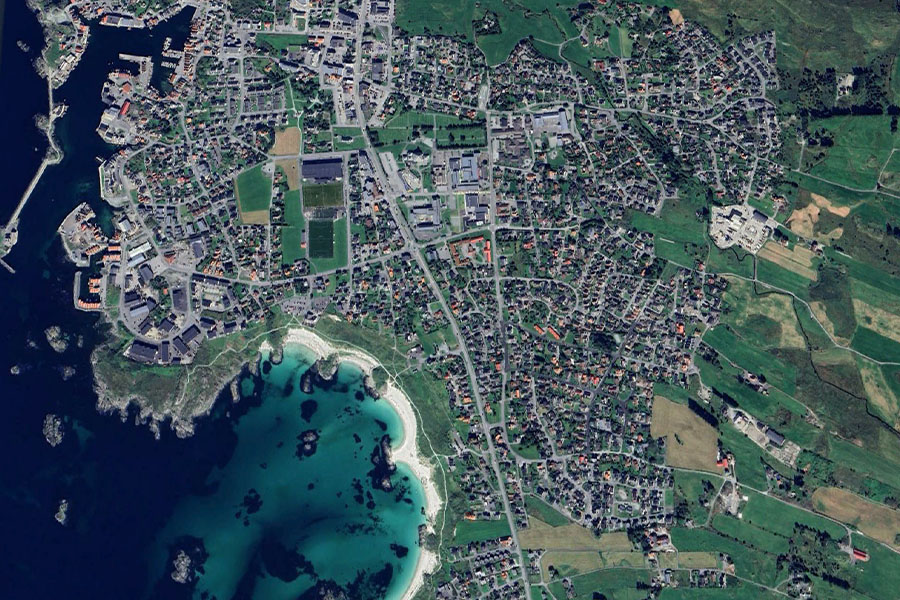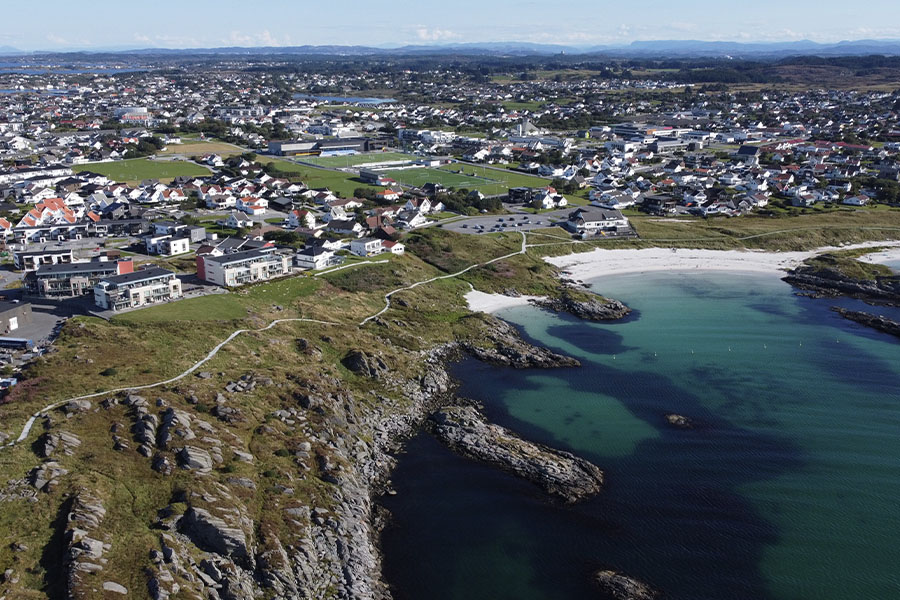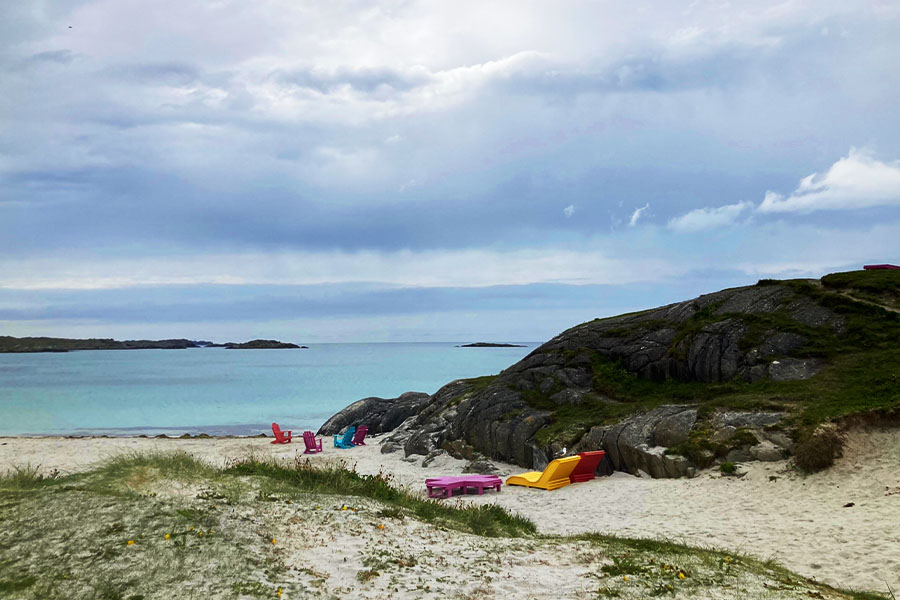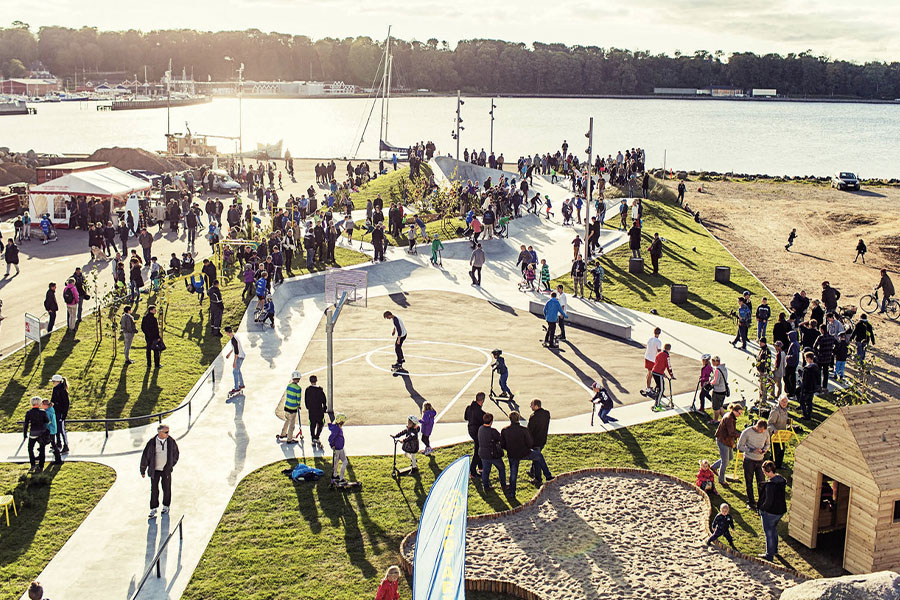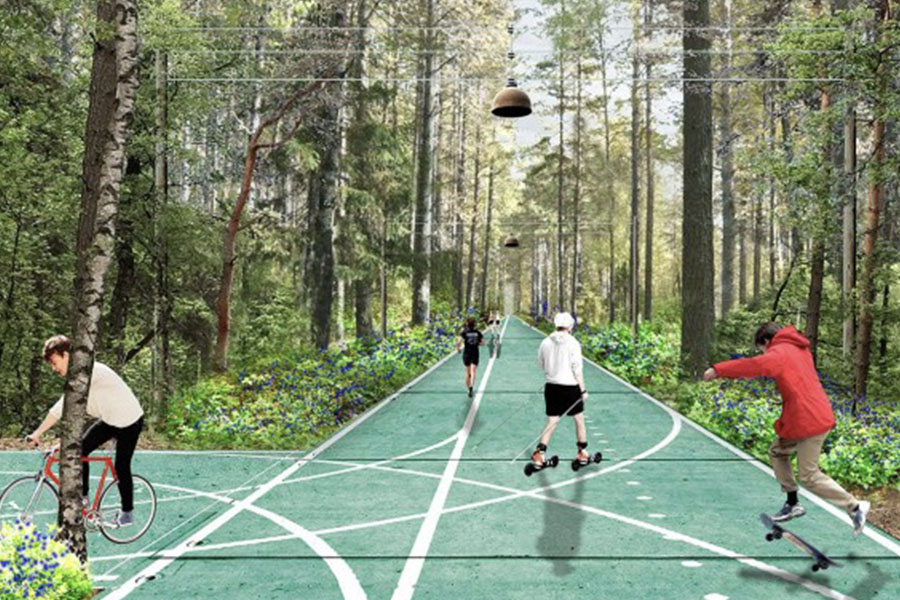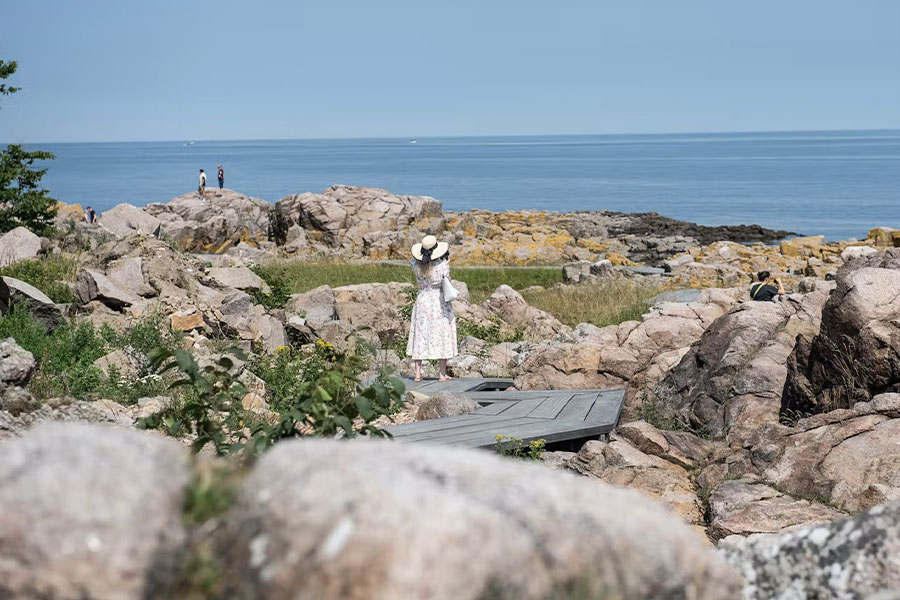Symbiotic Landscape
Åkrehamn (NO) - Runner up

TEAM DATA
Associates: Maicol Negrello (IT) – Landscape architect, Filipo Fiandanese (IT), Alessia Carena (IT), Federico Demichelis (IT), Marthe Van Endert (BE), Sara Barera (IT) – architects, Silvia Lanteri (IT) – architect urbanist,
Contributor: Cara Geldenhuys (ZA) – architect
https://collettivoselvaticus.wordpress.com/
See the complete listing of portraits here
See the site here
TEAM PORTRAIT
VIDEO (by the team)
INTERVIEW
Click on the images to enlarge
1. How do you define the main issue of your project in relation with the theme “Living Cities Imagining architecture taking care of the milieus”? And in which way do you think your project can contribute to an ecological and/or social evolution?
We decided to approach the landscape and urban issues not only from the physical/material point of view - something that could partially come later, in the next steps - but also considering the project as a strategy for the city, a phased process that can direct the future transformation of the urban spaces in an ecological dimension, supporting the variety of vegetal and animal species that can co-live there.
2. How did the issues of your design and the questions raised by the site mutation meet?
The project “Symbiotic Landscape” focuses on a series of elements in Åkrehamn that ask to be reconnected, as part of a complex system of commons for the inhabitants (intended as both human and non-human): the waterfront facing the sea; the public spaces belt were the main welfare spaces are located; the inner transversal road in between houses; the Fv 547 main axis as a perimeter edge.
PROJECT:
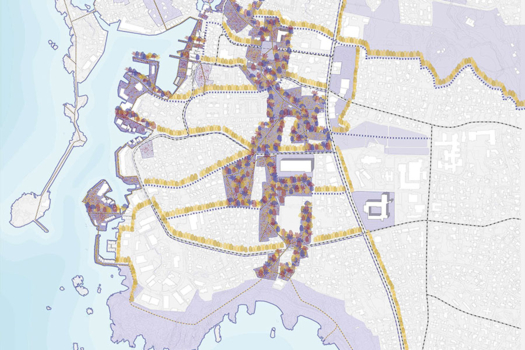
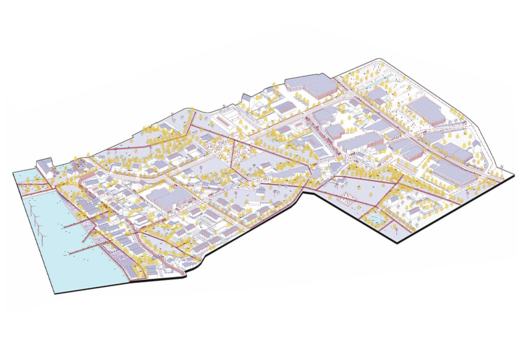
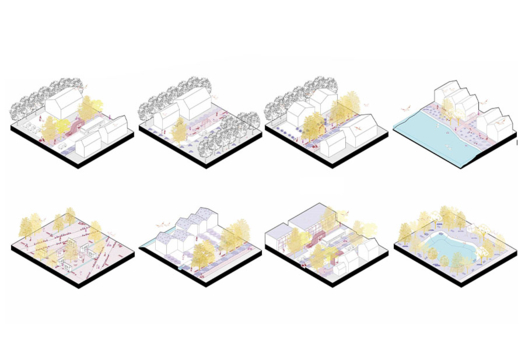
We are interested in the issues of urban regeneration in fragile areas, with a focus on nature-based solutions, with attention to the coexistence of different inhabitants. Our references were various designers who in the last decades approached these themes, such as Effekt Architects, SLA, and White Arkitekter.
SITE:



Our project identified various steps for the transformation of this territory, opening the scale of intervention to a wider portion of the city along the coast. We think that some actions could be put as a priority, while others could follow by being tested and implemented together with the local community. In general, we consider the public space as something that needs to be designed and transformed by the administration with a clear plan, a base where a series of single actions and architectures could be driven by inhabitants and private stakeholders to implement the idea of commons also with “bottom-up” initiatives.
REFERENCES:



The three founders of the team have been colleagues and friends since university, while the others met through the years in various design ateliers and research activities where they shared common interests in urban regeneration with a focus on landscape and nature-based solutions.
6. How could this prize help you in your professional career?
Europan is a huge opportunity that helps young architects to test ideas and to create networks. For some of us, it will help in introducing ourselves to architectural bureaus, while for others it will push academic research in the direction of the ecological issues addressed by the competition.
TEAM IDENTITY
Legal status:
Team name: Collettivo Selvaticus
Average age of the associates: 23-33 years old
Has your team, together or separately, already conceived or implemented some projects and/or won any competition? if so, which ones?
Some of the team members are still students, some others are architects and post-docs. Considering the Europan competition, the three founders also got a special mention in Pitea (SE) in the current edition with the project entitled “Lagom”. Moreover, one of the founders - Silvia Lanteri - was also part of the “Making Room(s)” team that was selected as runner-up in Cuneo (IT) by Europan 14.



